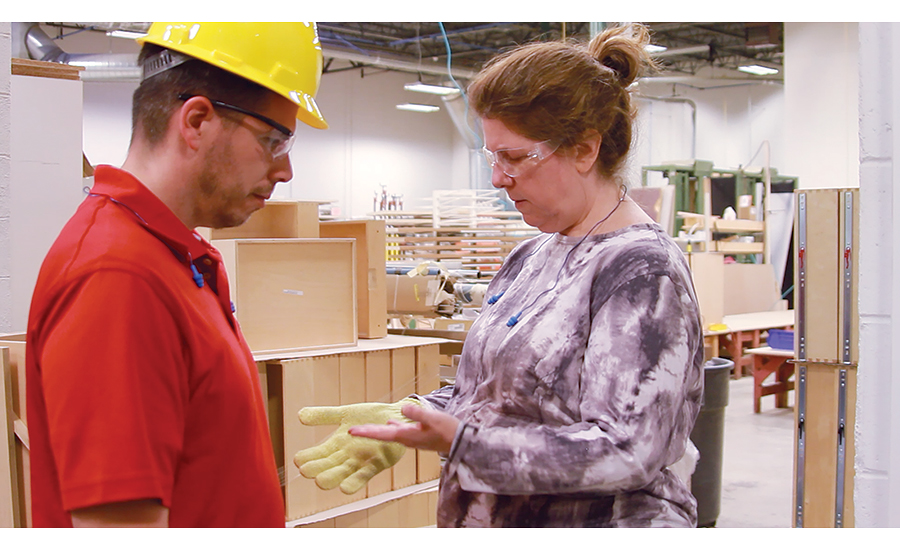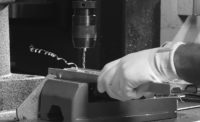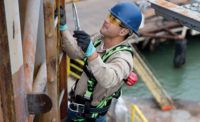Current cut protection testing methods do not provide the results safety professionals need to make informed decisions about proper hand protection. Standards for identifying proper workplace cut protection are confusing. Tests used to determine the cut level rating of gloves and other protective products are far from perfect.
In particular, they do not take into account the wide range of real-world conditions that can affect glove performance. It’s important to differentiate between what is tested in the lab and what performance looks like on the assembly line.
Two tests
Current tests to determine cut resistance evaluate one basic type of cut hazard, under very limited conditions. However, these tests use two different approaches, reflecting the two major cut resistance standards: EN 388, used in Europe, Asia-Pacific, South America, Mexico and parts of Canada; and ANSI/ISEA 105, mainly used in North America. These standards are not identical.
|
• The EN 388 standard uses the Coup method, which counts the rotations needed for a circular blade to cut through a material while moving laterally across it. The count is indexed by use of a control fabric, a standard cotton. This indexed value is converted to a simple cut level, ranging from Level 1 to Level 5.
• The ANSI/ISEA standard uses the ASTM F1790 method, which measures the weight in grams needed to cut through a glove material, when applied to a straight razor blade, over a distance of 20 mm (3/4 in). Each cut level from 1 to 5 denotes a specific range of weight, in ascending order.
Test results can be used as a baseline, but other important factors—actual work conditions—also need to be taken into consideration. Everyday work tasks such as machine assembly, handling glass panels, stamping metal and many more can mean gloves take a pounding—literally.
Protecting hands beyond the lab
You can steer clear of possible performance and health issues by choosing advanced cut-resistant materials that have achieved high cut level scores of up to EN 388 Level 5, and performed exceptionally well on the jobsite.
Gloves made with advanced technology offer these advantages:
T Sustained high cut-resistant performance. Because workplace conditions such as impact and abrasion do not cause advanced fibers to break, no weak spots are created and the added protection provided by mineral micro-particle reinforcement remains intact.
T Improved worker comfort. Select advanced fibers that are smooth, soft and flexible and can be used to manufacture very lightweight, thin, cool and comfortable glove designs.
T Excellent value. Look for specialized fiber that can be laundered to extend its useful life, retains its cut-resistance score even when subjected to workplace stresses and provides a superior experience for workers, helping to support compliance that can drive down the costs of hand injuries.
It’s ironic that materials used in cut-resistant gloves to protect workers can do harm – or leave workers more vulnerable to injury. Continuous glass filament, for example, has been a common material incorporated into protective gloves. It is inexpensive and it adds a significant amount of hardness to boost cut resistance, as measured by current standard tests used to calculate cut level. Fiberglass also has a high strength-to-weight ratio. When used in textiles, it withstands the multi-directional movement of knits, increasing strength without adding additional bulk or weight.
Keep in mind thin filaments can break under impact and irritate the skin. When encapsulated between layers of a non-irritating material such as nylon or polyester, encapsulation may mask breakage, making it difficult to detect that gloves are damaged.
Conclusion
Cut level scores for glove materials tell only part of the protection story. Ratings achieved with current test methods are one-dimensional, reflecting only controlled lab conditions instead of messy and variable real-world scenarios. Reliance only on a cut level score can lead to a false sense of security for customers and their employees. It is important to consider issues such as sustained protection, comfort, durability and total value when choosing between traditional fiberglass-reinforced gloves and those featuring advanced materials.
1 http://ehstoday.com/hand-protection/cut-through-confusion-selecting-cut-protective-ppe
2 http://www.superiorglove.com/pages/wp-content/uploads/Superior-Book-of-Hand-Protection.pdf





